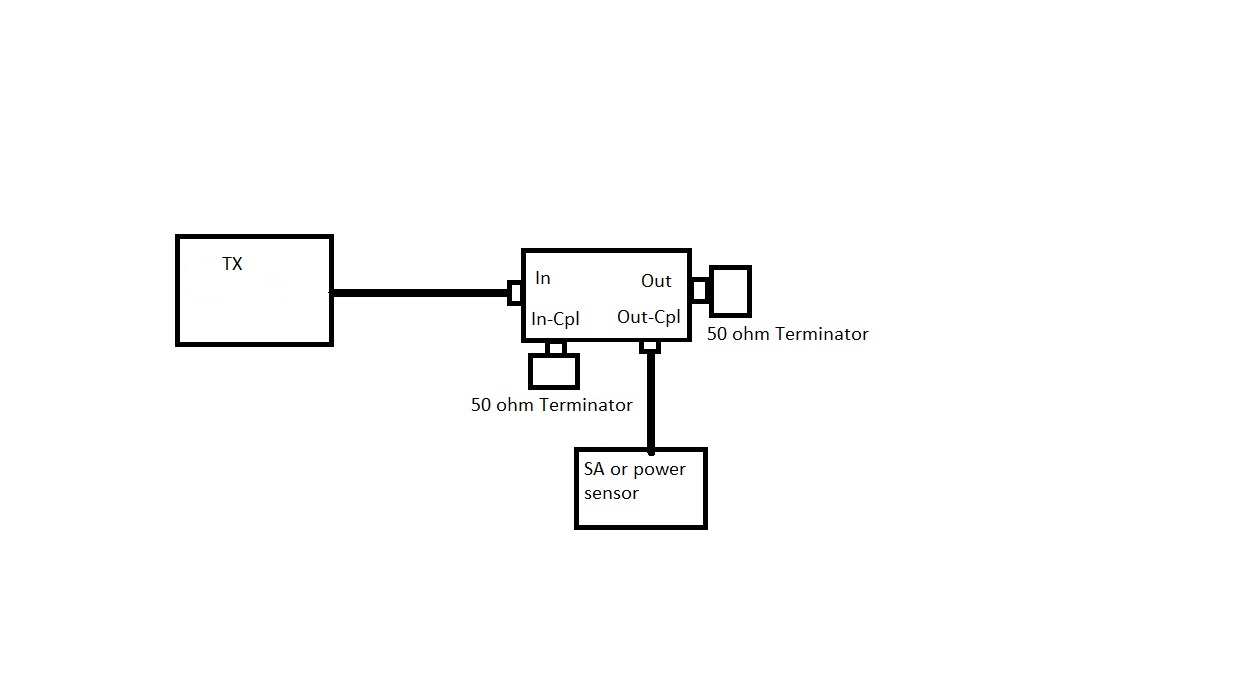Measuring the return loss of a transmitter
Someone recommended A VNA sweep at frequencies close to the TX frequency, but I am not convinced because I have seen different results for freq.s lower/higher than the Tx.
And personally I don't think that the return loss of the side bands are necessarily always the same as the Tx frequency!
Any recommendations?
You may sweep a wider band around TX frequency. Also try increase the sweep power to suppress the signal from the source. Use large average factor (for example 100) also helps to reduce the interference from the source since the source is independent of the injected signal from VNA.
Is the transmitted signal since wave or binary signals? The spectrum of is quite different for those two cases.
You should use Load Pull technique to find the Source Impedance.VNA cannot measure that..
Simply, you will use a Slider Tuner with a Power Meter the when you reach max. Power Level, it's complex conjugate of Source Impedance where you read the impedance of the slider tuner.
Load pull is used to measure higher-power output, the output power is so high that the linear model can not be applied anymore. Zeppelin doesn't say what is output power. If it is power amplifier working at the nonlinear range of transistor, I fully agree that load-pull method must be used.
Bigboss, cariban
Thanks for you feedback.
The source is RSL10 which is a Bluetooth SoC with maximum Tx power of +6 dBm.
Well, it is definitely not a power amplifier. If the output level is several dB lower than the output P1dB point, the amplifier can be still considered as linear. If you don't know the output driver, you may just vary the ouput level and watch if there is big change of the output impedance. For a linear system, the output impedance should be independent of output level.
I have seen indications that the output impedance may be changing with the output power level. That's why I need a reliable setup to measure it
Just do 100 times averaging and see if the result is more stable. The transmitted signal is noise from the VNA point of view.
Load Pull is also used to obtain Source Impedance under small signal driven circumstance.Here Load Pull means is to use a Slider Tuner ( that's why I used load Pull terminology ) to get the complex conjugate of the Source Impedance.I don't talk about standard Load Pull set-up..
Most of the new VNAs support +10dBm as maximum input power, so you can measure directly the return loss at +6dBm. Just check the specs of your analyzer.
The observation may indicate non linear PA behaviour. Getting correct output impedance with VNA is questionable in this case. Better use load pull, as suggested.
If you determine varying transmitter output impedance, what's the design consequence? Interestingly chip vendors rarely specify output impedance, usually only optimal load impedance.
Since I don't have a load pull handy, I thought of a comparative measurement to see if there really is a difference in source impedance between different power levels:
Connect the source to a terminated directional coupler and measure the return loss from the In_Cpl/Out_Cpl power difference with an Spec Analyzer or power meter(diagram)
I know this is not accurate but I should be able to detect a change in the source impedance.
Does this make good sense?
What specs do I need in the directional coupler to get the best results out of this? does this do the job?
https://www.minicircuits.com/WebStor...ZABDC10-25HP-S

This won't work since you are actually measuring the returnloss of the terminator, not the source impedance of TX. Have you tried to measure the output impedance directly with large averaging factor? As vfone said, 6dBm is not a problem for VNA.
a VNA attached to the output of a transmitter WHILE IT IS TRANSMITTING is a good way to blow up your VNA!
Load pull might work. Or some sort of stub tuning, and when you are getting the maximum radiated power, turn off the transmitter, detatch the connector to the transmitter output, and measure the connector/load impedance with the VNA...the transmitter impedance is the conjugate of that.
return Measuring transmitter 相关文章:
- Simple question about tuning return loss of antenna in practice by stick copper onto
- Measuring phase shift
- Issues with measuring return loss
- Measuring electrical field and magnetic field of an antenna with digital magnetometer
- Power meter in end of transmitter
- Relating Transmitter dBm to uV/m and EIRP
